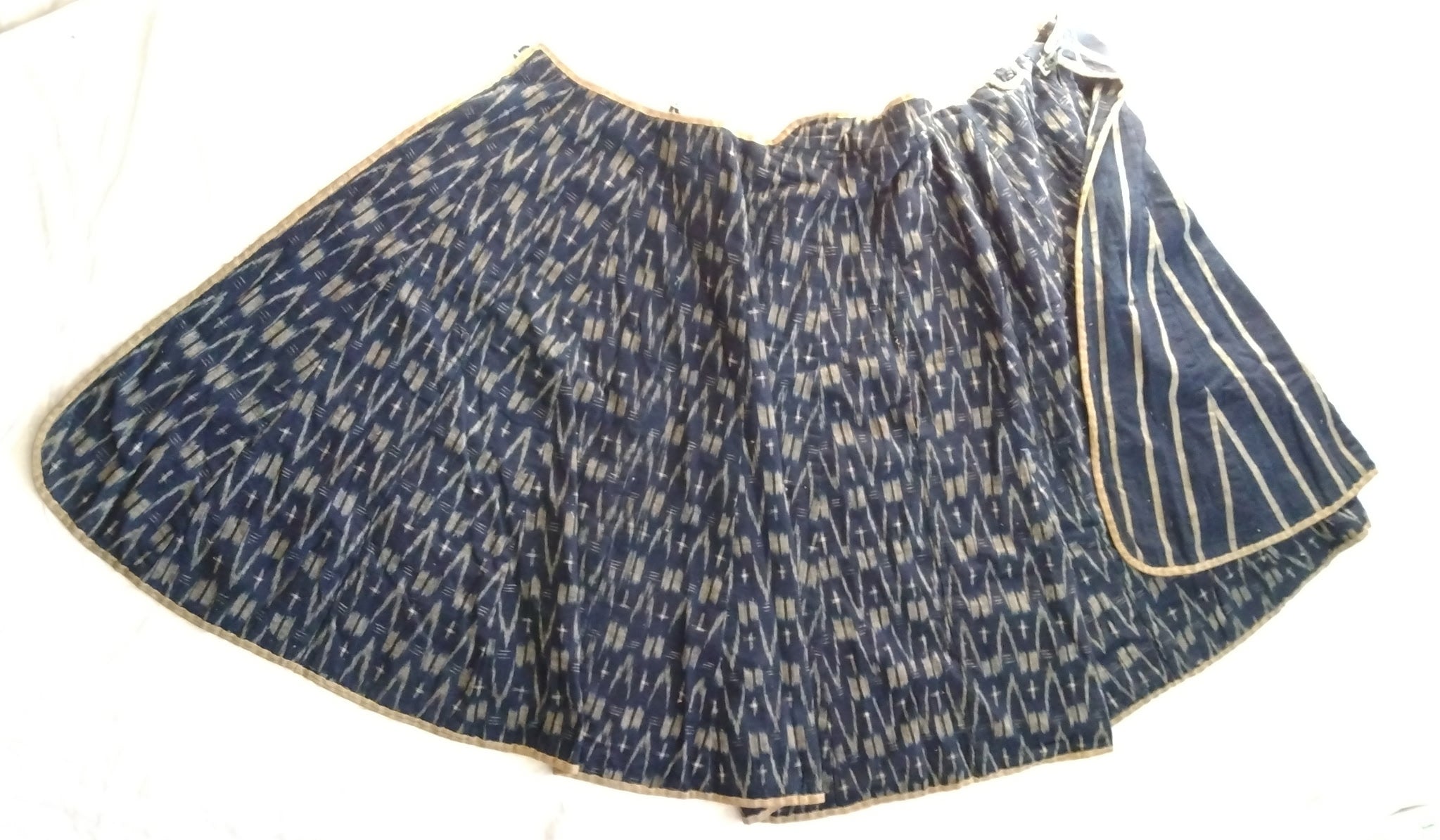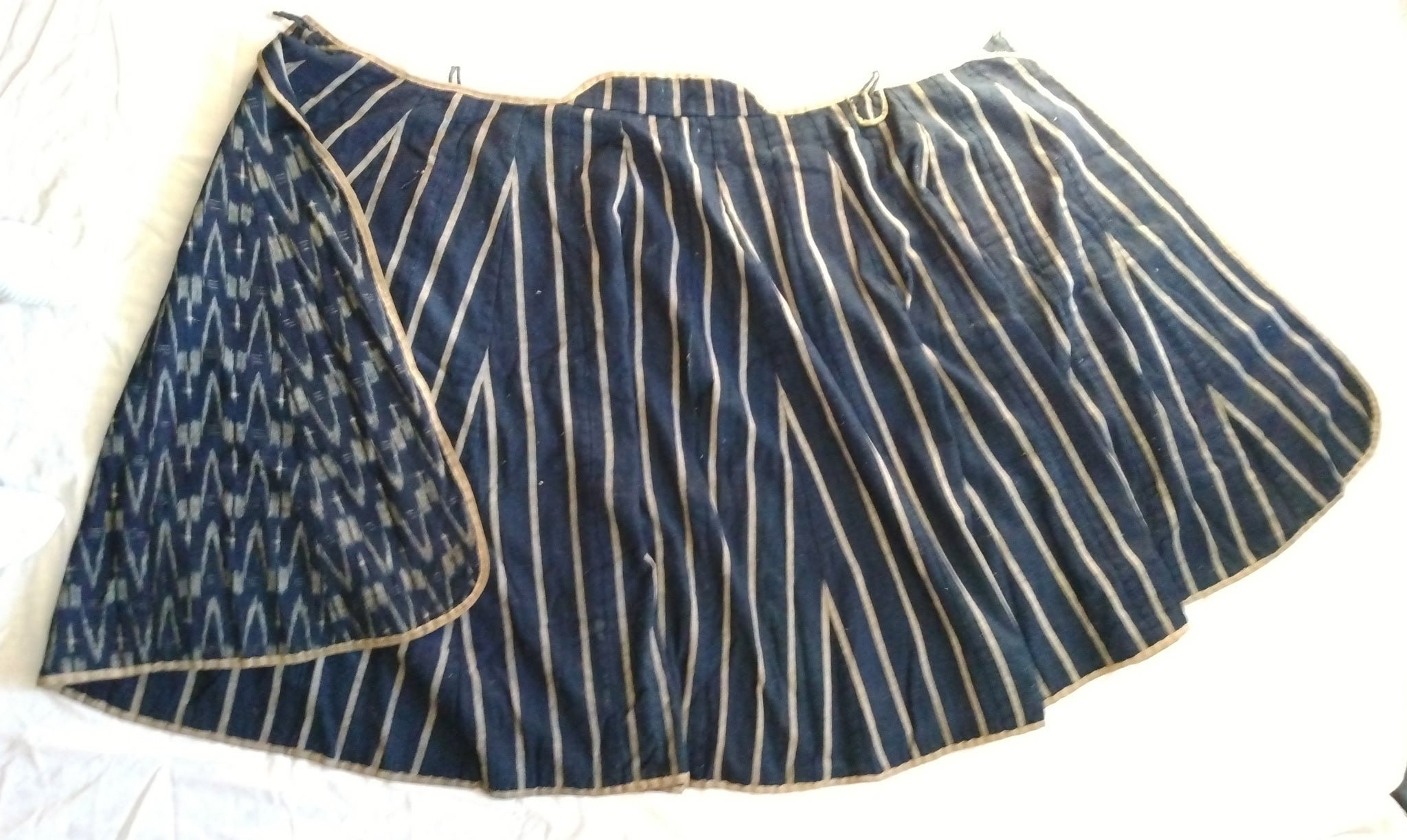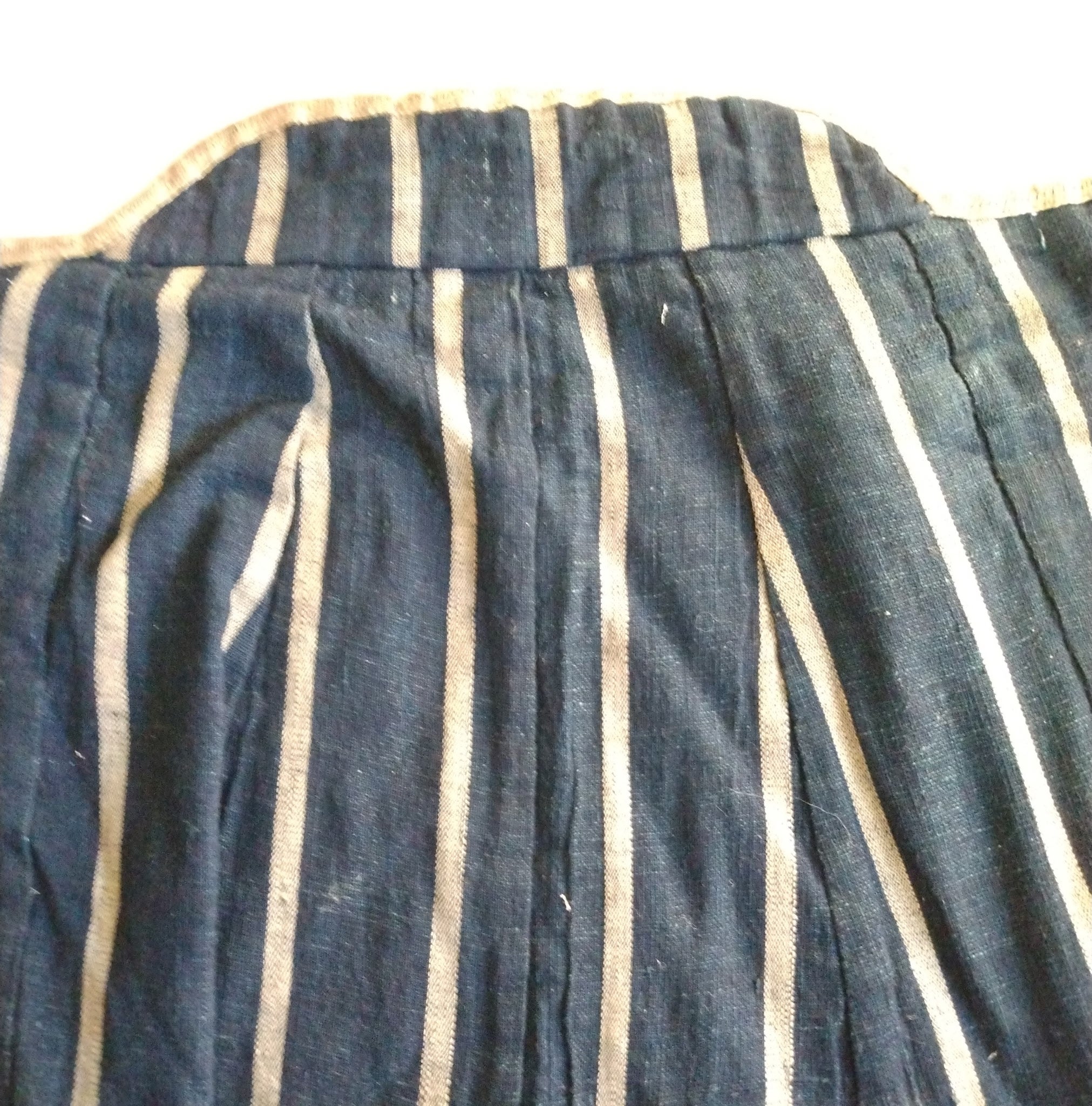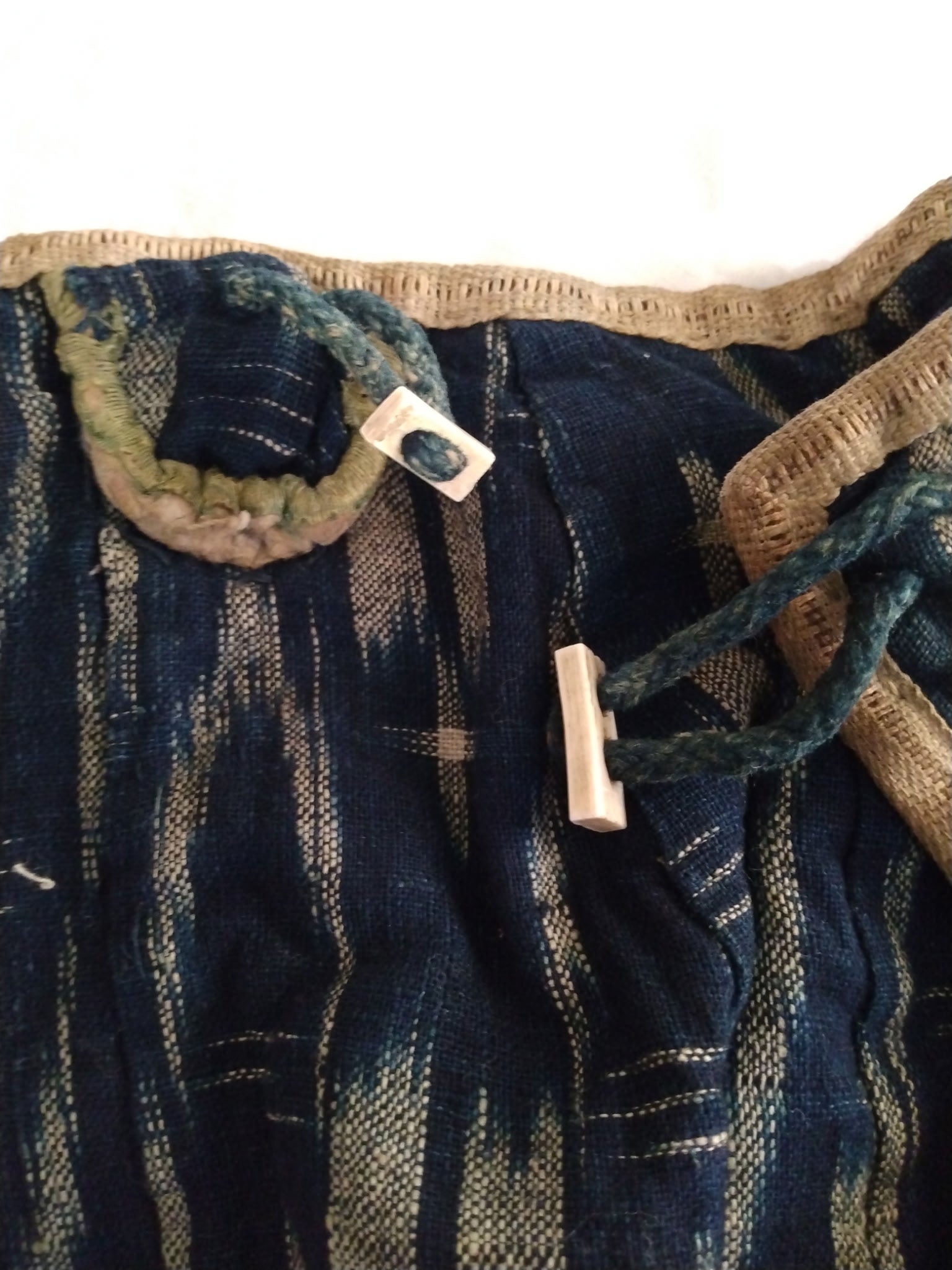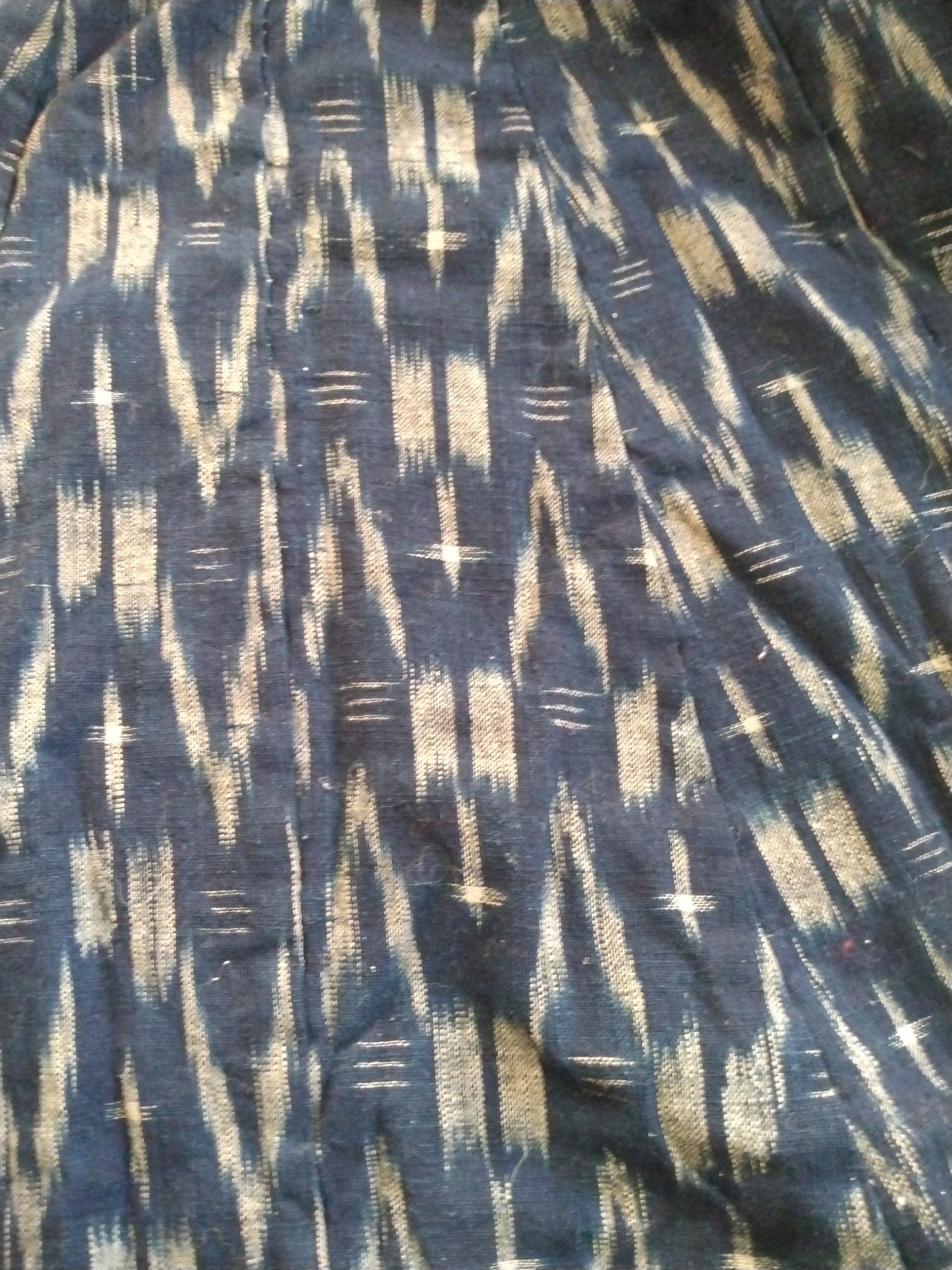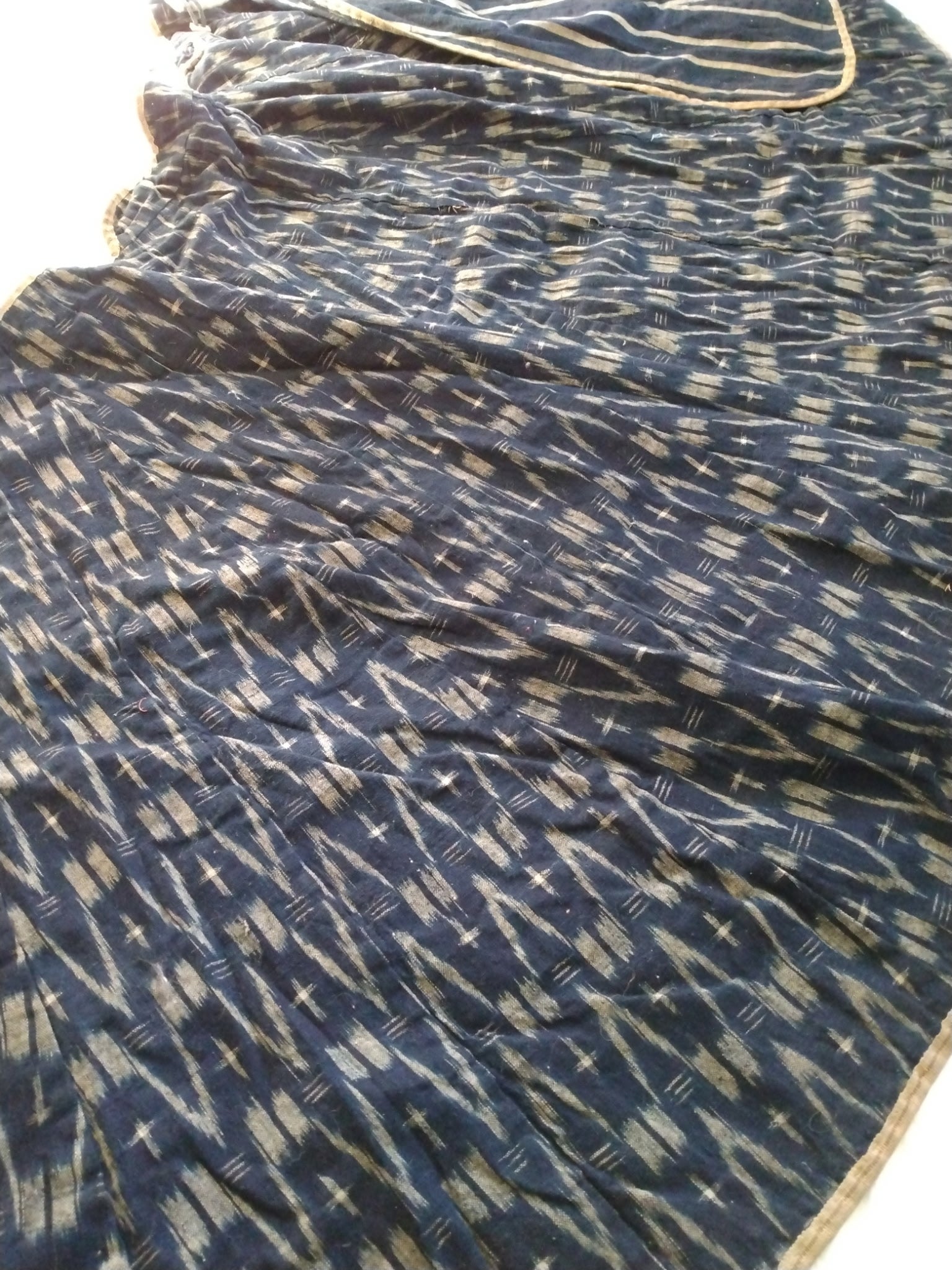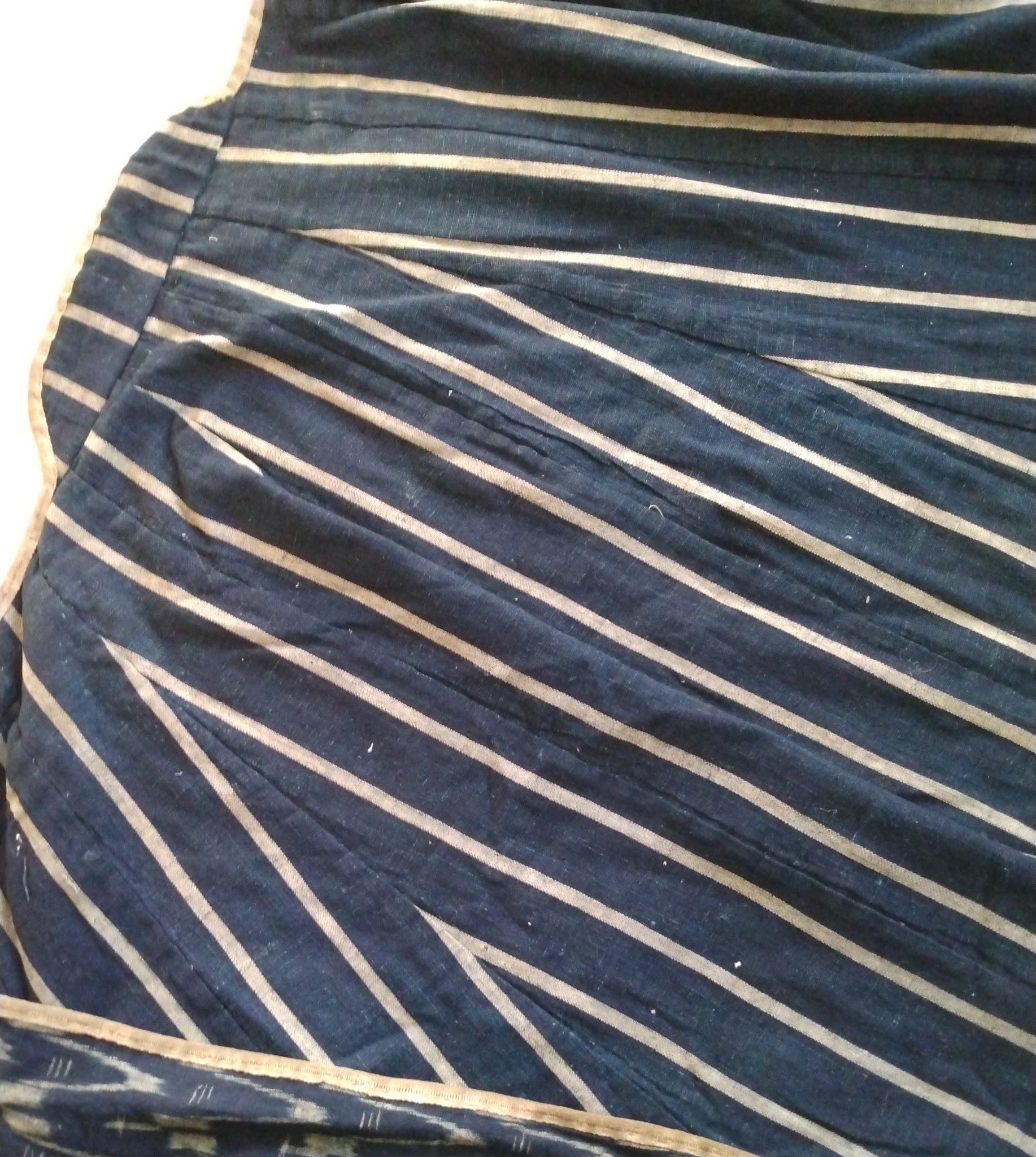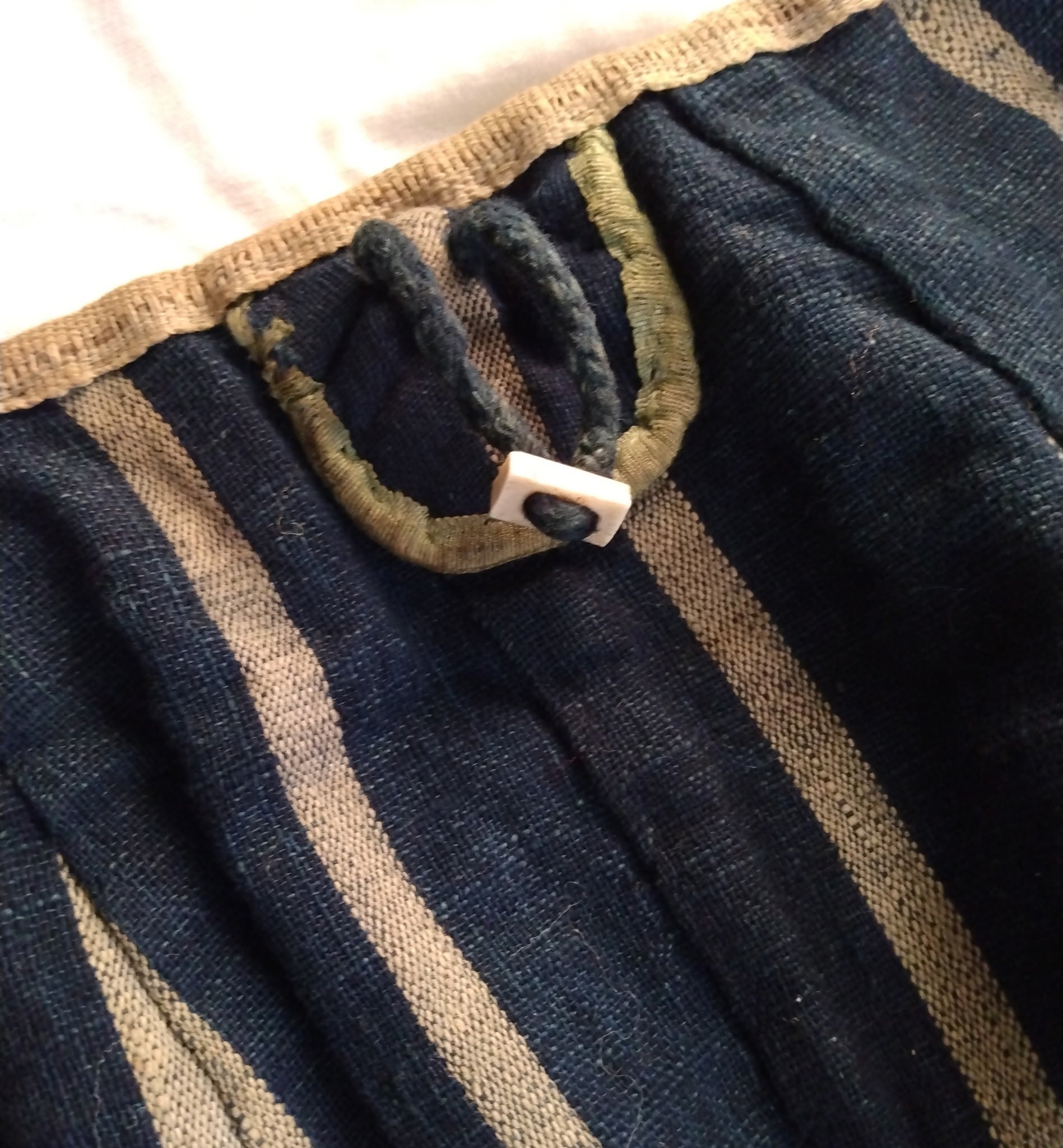Description
This Hikimawashi (wrap-around) Kappa (rain cape) from the late 19th-early 20th C. is in pristine condition and an excellent example of this type of wear from the Edo (1600-1868) and Meiji (1868-1912) Periods. It is reversible, with both Kasuri (ikat) indigo dyed heavy cotton and Shima (striped) indigo cotton sides. You can still hear and feel the interior touyu gami washi (hand-made paulownia fiber paper) lining oiled with kakishibu (persimmon tannin) to make it waterproof. The four reinforced toggles are likely a bone material and are also fully intact. It would make a great addition to a textile or clothing private or museum collection, or a large and dramatic decorative piece. H. 38"(96.5cm) x W.95.5"(242.5cm/2.43 meters).
Kappa were modeled after the Capa rain capes worn by Spanish missionaries who first arrived in Japan in 1549, during the Muromachi Period (1336-1573), and were allowed to remain in certain parts of Kyushu in the Momoyama Period (1573-1600) until an all-out ban on Christianity was imposed by the Tokugawa Shogunate in 1620. Even in this short time, the form of this cape made an impact on practical Japanese fashion of the Edo and Meiji Periods.
The Thiel Family has graciously allowed me to select a number of items from their parents’ extensive private collection of Japanese and Japanese-inspired crafts to offer here. We are offering them at great values so that they may find new loving homes, and ALL profits are being donated to Midori-sensei’s long-term care fund. Below is some brief information on Philip Thiel and Midori Kono Thiel.
Philip Thiel and Midori Kono Thiel were a decades-long dynamic duo of support and contributions to the Art, Architecture, and Cultural communities of the greater Seattle area and beyond. Their contributions are far too numerous to list here; but they were, to say the least, immense, generous, and sure to leave a lasting legacy. They were also passionate collectors of Japanese arts and crafts; including textiles, ceramics, architectural pieces, wood, lacquer ware, paintings, prints, folk toys, and reference books on all of the above.
Midori Kono Thiel (1933 -) has long been widely recognized for her artistic achievements, her teaching, and her cultural contributions to the Japanese art and culture communities of the Pacific Northwest. After completing her MA in Painting at UC Berkeley, she went to Japan on a UC Traveling Fellowship to study woodblock printing with well-known hanga artists Hiratsuka Un’ichi and Hagiwara Hideo. Over the years, she has studied with numerous Japanese artists in Japan, and at workshops in the U.S. by visiting Japanese artists, in the fields of Sumi and Nihonga painting, calligraphy, print making, weaving, dyeing, music (koto and shamisen), Noh and Kyogen performance, and Nihon Buyo dancing. She had become so well-accomplished in several of these areas that she has received numerous awards in the U.S. and in Japan for her artwork, and she has taught Japanese arts and culture to a variety of students in the region from young children, to university students, to senior adults.
Midori-sensei’s contributions to the cultural community of Seattle have been recognized and awarded by the Japanese Consul General in Seattle for fostering US-Japan relations, and from the Seattle Cherry Blossom Festival for furthering the understanding of Japanese culture in the US. She was a long-time artist in residence for local schools, and for the King County and Seattle Arts Commissions. She was a long-time supporter and performer for the Seattle Japanese Garden, and for numerous cultural festivals across the region over many years. If something “Japanese” was happening, Midori-sensei was always there performing and making invaluable educational contributions.
Philip Thiel (1920-2014) had careers in Naval Architecture (teaching at MIT); as a working (“dry land”) architect at the firms of Bauhaus School architects Marcel Breuer (NY) and Walter Gropius’ The Architects’ Collaborative (Cambridge); as a professor of Architecture and Environmental Design at UC Berkeley; and as Professor Emeritus of Architecture and Urban Planning at the University of Washington, in Seattle. His deep love for the art, architecture, and culture of Japan began with meeting Japanese architect and educator Kiyoshi Seike while at The Architects’ Collaborative; and with meeting his future wife of 59 years, Midori Kono, while at UC Berkeley. This interest led several research visits to Japan, and to teaching Architecture at the Tokyo Institute of Technology and at the Sapporo School of Design.
Although his long teaching career and published architecture books have surely impacted thousands of students from many parts of the world, he was also a community activist in the greater Seattle area. His professional expertise and interests in public spaces, environmental psychology, and the human experience of moving through built environments led him to becoming an important community advocate for park spaces and public plazas in Seattle.

